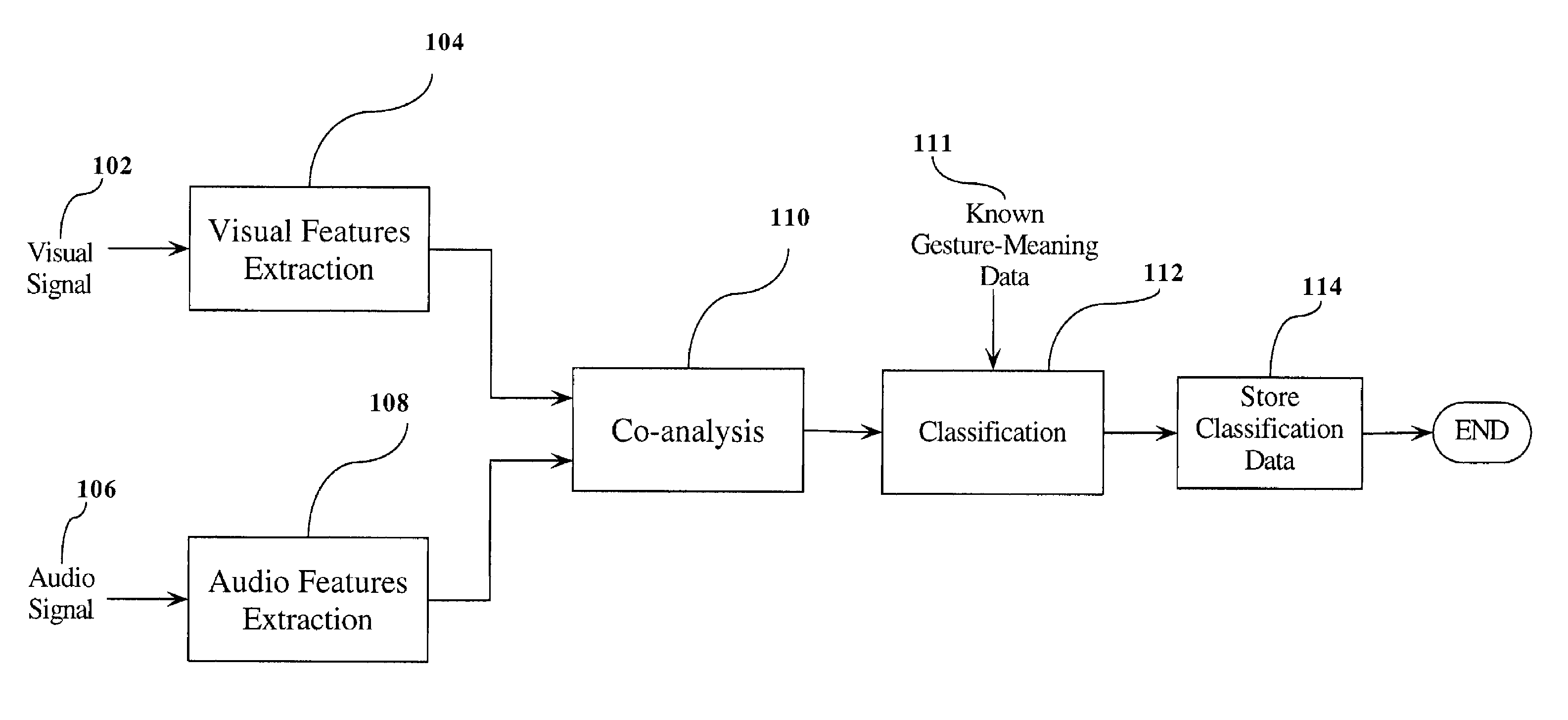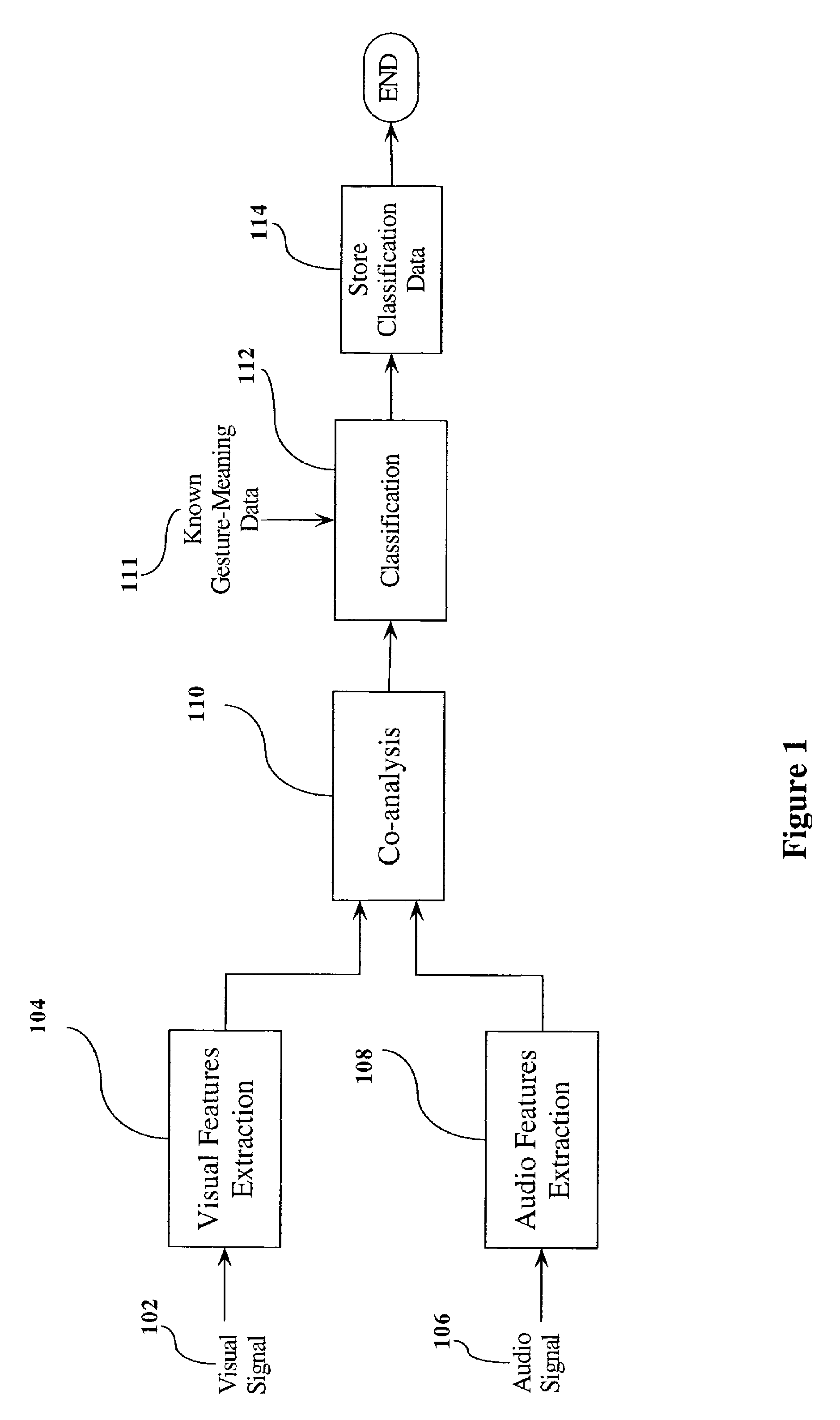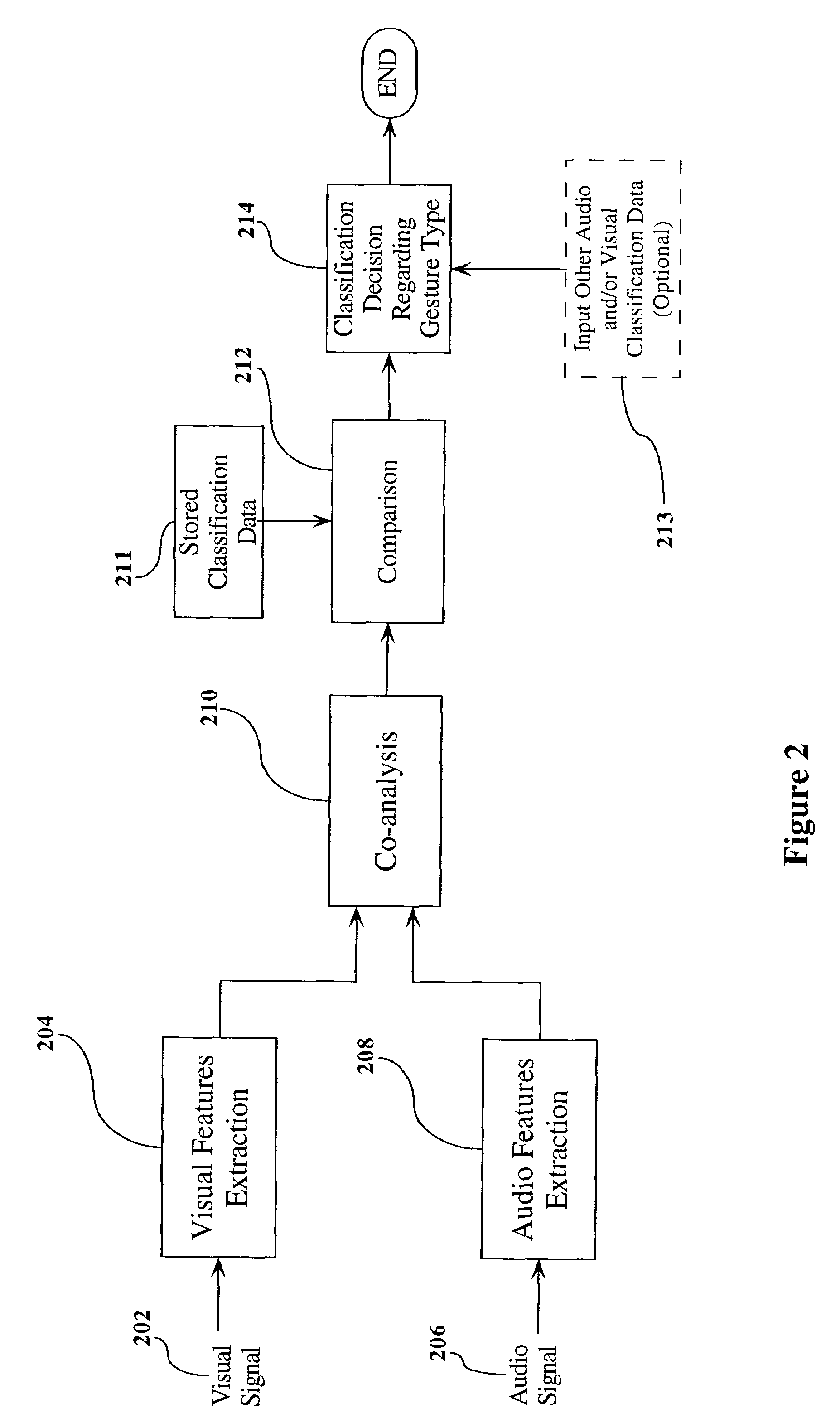Prosody based audio/visual co-analysis for co-verbal gesture recognition
- Summary
- Abstract
- Description
- Claims
- Application Information
AI Technical Summary
Benefits of technology
Problems solved by technology
Method used
Image
Examples
example
[0046]The following is a discussion of an example of the operation of an illustrative embodiment of the present invention, along with an explanation of the theory behind its operation.
[0047]Previously recorded Weather Channel broadcast video was were digitized in MPEG-4 format. The data was prepared by separately extracting visual and audio data from each sequence of recorded video / audio. The extracted data and the original video / audio sequences information were used to label gesture intervals on over 60 minutes of video. Unlike multi-joint models, an end-effector description was assumed for gestures such that only point position of the head and the hand are used. Such model has been previously found descriptive enough to capture gesture phases in a large display domain.
Visual Feature Tracking
[0048]A previously developed algorithm for visual tracking was applied to extract the positional data for the head and the hands of the narrator. The algorithm is based on mot...
PUM
 Login to View More
Login to View More Abstract
Description
Claims
Application Information
 Login to View More
Login to View More - R&D
- Intellectual Property
- Life Sciences
- Materials
- Tech Scout
- Unparalleled Data Quality
- Higher Quality Content
- 60% Fewer Hallucinations
Browse by: Latest US Patents, China's latest patents, Technical Efficacy Thesaurus, Application Domain, Technology Topic, Popular Technical Reports.
© 2025 PatSnap. All rights reserved.Legal|Privacy policy|Modern Slavery Act Transparency Statement|Sitemap|About US| Contact US: help@patsnap.com



